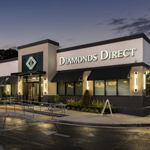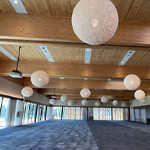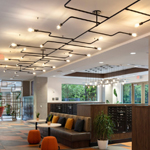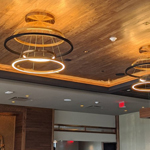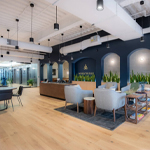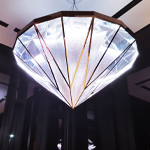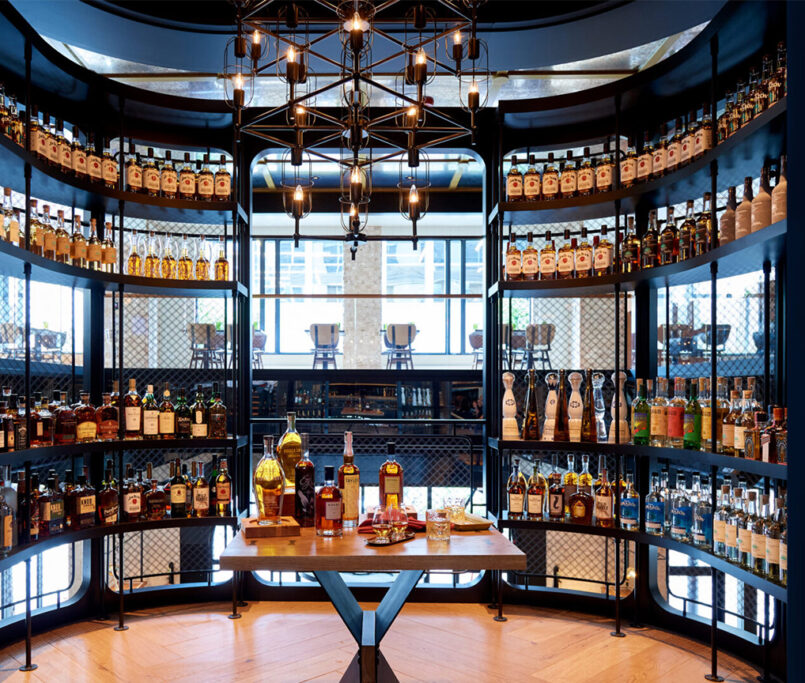Lighting color to increase sales productivity
Everyone intuitively knows that lighting affects mood. You feel better on a bright day filled with sunshine. You are more likely to feel a lack of energy on a cloudy gloomy day. School rooms and office spaces have traditionally been lit by bright flourescent lights to mimic a bright sunny day increasing attentiveness. Turn on a 1950’s love story movie and the phrase romantic lighting is sure to come up. Your sleep pattern is dictated by the natural pattern of day and night, referred to as body clock and scientifically as circadian rhythm.
The intrinsic knowledge that lighting affects human behavior has now been confirmed in the age of technology by scientific research and studied by the designers of Ideoli Group. The subject of workplace lighting was considered by Dr. Mirjam Muench and his associates for an article on productivity. They tested a work place with daylight (without giving the subjects window views) against a workplace with artificial light. The conclusion of their research showed that those in the artificial lighting became less alert, had mood changes with less visual comfort by the day’s end. Whereas, the subjects who worked in natural light were more alert as evening approached, had less mood swings during the day without discernable eye strain.
Professor John S. Dyson of Cornell, whose area of expertise includes eating behaviors tested his theory that lighting affects how much you eat. Two groups were giving the same menu in the same eating space with different lighting. One group was subjected to bright lights, the other to more subdued lighting. Those that ate in the subdued lighting made healthier food choices, ate fewer calories and enjoyed their food more than their counterparts in the brightly lit dining area. These considerations are essential in a space design at Ideoli.
Supermarkets have long known the value of lighting in appealing to consumers. The meat always looks redder in the butcher case, the lettuce always looks greener in the produce case. Not because of the brightness of the light, it is the warmth of the light. Artificial lighting has a measurement known as CCT, Correlated Color Temperature, a scientific way to measure the light spectrum produced that are affecting the colors that are perceived. An example that everyone can relate to is the term on a light bulb box, Cool White, which is describing the CCT of the light output of that bulb. A Cool White light bulb in your bathroom will display a different you in the morning than a bulb at the lower end of the CCT spectrum.
When considering the use of a space, lighting is an essential element. Your bedroom should have a softer light with a lower CCT to allow your circadian clock to wind down. A home office used during day light hours, brighter with a higher CCT number to keep you attentive. There really is different lighting for different areas of your home. In your business the right lighting choices will improve your bottom line. When it’s time for Ideoli to invigorate your work space, hospitality, retail or office, lighting is an essential element of the design.
The professional space designers at Ideoli are well versed in the importance and significance of the lighting needed to bring every space to its full potential. Knowing, the brightness, warmth, and impact of each lighting choice is a crucial part of any redesign. Lighting for your customers and staff are calculated to meet all the requirements of your environment.
Lighting is not an afterthought for the designers of Ideoli, it is an integrated component that enhances the entire project. Is it time to invigorate your space? Let Ideoli show you the light.


